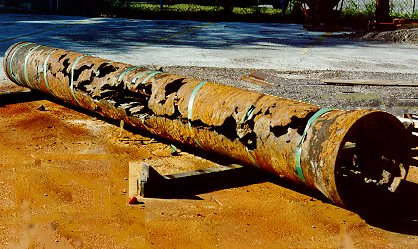 Menu
Menu
The Chemical Structure, Applications, and Benefits of Ethoxylates
According to the desired molar ratio, ethylene oxide (EO) is added block-wise or randomly to sources such alcohol, acid, amine, or vegetable oils to generate the chemical known as ethoxylate. Ethoxylates are more effective as surfactants and dispersants than other alkoxylation methods.
Ethoxylates are Nonionic Surfactant
Ethoxylates are a class of nonionic surfactants with varying degrees of ethoxylation. They are typically cloudy or colourless liquids or flakes. Their wetting and emulsification properties are classical. Nonionic surfactants may also be anionic or nonionic. However, they do not interact well with cationic surfactants.
A nonionic surfactant has a "cloud point" (or optimal detergency) at a certain temperature. This point is determined by the ratio of hydrophilic to hydrophobic moieties, and it varies from one type to another. Nonionic surfactants with a cloud point above or below the cloud point are considered low-foaming, while high-foaming nonionics have a higher cloud point.
Polyoxyethylene Chain in Ethoxylates
Alcohol ethoxylates are versatile surfactants that are produced by the ethoxylation of fatty alcohols. Their general structure is R(OCH2CH2)nOH with an alkyl group at the head. Varying the polyethylene glycol and fatty alcohol segment results in compounds with a wide range of properties. CFTA-assigned names for alcohol ethoxylates include ceteth, laureth, and myreth.
The ethoxylation degree of polyoxyethylene chains is controlled by the amount of ethyl groups in the molecule. The lower the ethylene oxide content, the higher the solubility in water. Longer chains have better emulsifying and foaming properties than shorter ones. Branched ethoxylates are less acidic than their straight counterparts, and they have lower critical micelle concentrations.

Ethoxylates as Dispersing Agent
The basic components of a dispersing agent are water and branched alcohol alkoxylate. The branched alcohol alkoxylate has properties that inhibit crystallization, but not the other way around. Its structure prevents crystallization and is desirable for applications where stability is required. It is often used to improve the wetting and dynamic properties of disperse agents. This article describes the properties of branched alcohol alkoxylate and discusses some of the advantages of each of these components.
The alkoxylation reaction produces branched alcohol alkoxylate oligomers with a specific molecular weight distribution. The kinetics of the reaction are determined by the size and nature of the alkylene oxides involved. For example, ethylene oxide exhibits a higher rate of alkoxylation than propylene oxide and butylene oxide. Both are effective dispersing agents.
Ethoxylates as Drilling Fluids
In drilling fluids, Ethoxylates can be added to improve their rheology properties and enhance the rheological properties of the oil phases. In one embodiment, this is accomplished by modifying the pH of the drilling fluid by adding Ethoxylates. In this way, ethylene oxide can enhance the rheological properties of drilling fluids without sacrificing their rheological performance.
Water-based drilling fluids may contain ethoxylates of C9-11, which are capped by chlorine. They may also contain phosphate-type builder, ethoxylate, or surfactant. The concentration of each of these compounds in the fluid depends on the type of application. Some types of drilling fluids may include less than one percent of each of these components. Some are also non-toxic.
The Bottom Line
The surface tension among two fluids, a gas and a liquid, or a liquid and a solid can be reduced by substances called ethoxylates. The phrase "surface-active agents" refers to the functioning of ethoxylates. Shower gel, shampoo, cosmetics, toothpaste, hair conditioners, and other personal care items all contain ethoxylates in significant amounts. The ability to provide wetting, cleansing, anti-foaming, foaming, emulsifying, and dispersing actions is employed in numerous everyday applications and goods.
